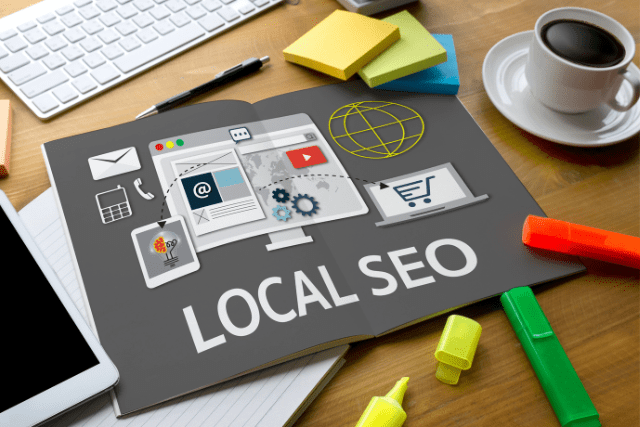Email marketing is worth considering if you’re looking for an effective way to boost sales and reach new customers. With the right strategy and tools, you can see real results quickly!
Table of Contents
What is email marketing, and how does it work?
Email marketing is a powerful tool that lets businesses and brands reach potential customers in a very targeted way, using the power of the internet to spread their message far and wide.
Email marketing involves using email newsletters, promotional emails, and other forms of content to connect with your audience and build stronger relationships with them.
Many different strategies and techniques are used in email marketing, giving you the flexibility to select the best approach for your particular business or brand.
Benefits of email marketing
Some of the key benefits of email marketing include:
Increased reach
One of the primary benefits of email marketing is that it allows businesses to reach a larger audience than they could through other marketing channels.
This is because there are over 3 billion email users worldwide, and businesses can send emails to all without spending a lot of money.
Email marketing allows businesses to target specific groups of people, such as those who have already shown an interest in their products or services.
Cost-effective
Another benefit of email marketing is that it is one of the most cost-effective marketing tools available.
This is because businesses only have to pay for the cost of sending emails and don’t have to pay for advertising space like they would with other channels such as television or radio. Email marketing can be automated, which further reduces costs.
Measurable
Email marketing is highly measurable, meaning businesses can track how many people open and click through their emails.
This information can then be used to improve future campaigns by making changes such as altering the subject line or the call to action.
Businesses can use email marketing software to segment their list into different groups so that they can send more targeted emails.
Personalized
Email marketing allows businesses to send highly personalized messages to their subscribers. This is possible because businesses can collect data about their subscribers, such as their names, ages, genders, and interests.
This information can then create customized emails more likely to convert into sales or leads.
Increased ROI
Due to all of the above benefits, businesses that use email marketing typically see an increased return on investment (ROI) compared to those that don’t.
A study by the Direct Marketing Association found that email marketing has an ROI of 4,300%, which means for every $1 spent on email marketing, businesses typically see a return of $43.
With the right tools and strategies, you can start seeing real results from email marketing in no time. Whether you’re new to this approach or already have some experience, plenty of resources are available to help you get started.
Top things to consider when choosing Email marketing software for e-commerce business.
When choosing email marketing software for your e-commerce business, several factors must be considered. These include the features and capabilities of the software, as well as how it will integrate with your existing systems and processes.
It’s also important to consider the cost of the software, both in terms of upfront investment and ongoing maintenance costs.
Scalability
When choosing email marketing software for your e-commerce business, it’s important to consider scalability.
You’ll want to choose a solution that can grow with your business, so it’s important to select a platform that offers a range of features and can be customized as your business grows.
It’s important to ensure the software you choose can handle large volumes of email so you don’t have to worry about your system crashing when you experience increased traffic.
Deliverability
Another important consideration when choosing email marketing software is deliverability. This refers to the percentage of emails successfully delivered to recipients’ inboxes.
To ensure high deliverability rates, choosing a platform with a good reputation and compliance with all major email service providers’ guidelines is important.
You’ll want to ensure the software you choose offers built-in deliverability testing so you can test your campaigns before sending them to your entire list.
Ease of Use
When selecting email marketing software, it’s also important to consider ease of use. You’ll want to choose a platform that is intuitive and easy to use so you can get up and running quickly without having to invest a lot of time in learning how the system works.
It’s helpful if the software offers a range of templates and tools so you can create professional-looking emails without hiring a designer.
Reporting and Analytics
Another key consideration when choosing email marketing software is reporting and analytics.
You’ll want to be able to track the performance of your campaigns so you can see what’s working and what isn’t.
Look for a platform that offers detailed reports on open rates, click-through rates, and unsubscribe rates.
It’s helpful if the software provides segmentation capabilities so you can drill down into your data and better understand your audience.
Integration With Other Systems
When choosing email marketing software for your e-commerce business, it’s also important to consider how well it will work with other programs.
You’ll want to ensure the platform you choose integrates seamlessly with other systems, like your CRM or shopping cart, so you can automate tasks like adding new subscribers to your list or sending abandoned cart emails.
Look for a solution that offers an API so you can easily connect it with any other third-party systems you use.
Customer Support
Another consideration when choosing email marketing software is customer support. You should look for a platform that offers 24/7 customer support if you run into any problems or have questions about how to use the system.
Additionally, it’s helpful if the company offers training resources like online tutorials or webinars so you can learn how to use the system effectively.
Best Email marketing tools for e-commerce business
Email marketing for e-commerce businesses can be done with the help of several different tools and platforms. Some top options to consider include MailChimp, AWeber, and SendinBlue.
MailChimp
MailChimp is one of the most popular email marketing tools available today.
It offers many powerful features that make designing and sending highly effective email campaigns easy, including:
- drag-and-drop editing,
- powerful segmentation capabilities,
- A/B testing,
- automated workflows, and more.
In addition to its core email marketing features, Mailchimp offers a suite of tools for managing your contact lists, building landing pages, and designing beautiful email templates.
With so much to offer, it’s no wonder Mailchimp is trusted by millions of users worldwide.
AWeber
AWeber is another popular option for e-commerce businesses looking to boost their email marketing efforts.
With AWeber, you can create beautiful email newsletters, automate your email marketing campaigns, and track the results to see what is working and what isn’t.
AWeber also makes it easy to segment your list to send targeted emails to different groups of people.
Whether you’re just starting with email marketing or you’re a seasoned pro, AWeber is a great tool for growing your business.
SendinBlue
SendinBlue is another great option for e-commerce businesses looking to improve their email marketing efforts.
It offers a range of powerful features designed to help you quickly and easily create professional-looking campaigns, including drag-and-drop templates and advanced analytics dashboard.
Constant Contact.
Constant Contact is a leading provider of email marketing services. The company offers many features and tools to help businesses create and send high-quality email campaigns.
Constant Contact also provides extensive resources to help businesses get the most out of their email marketing efforts. In addition to email marketing, Constant Contact offers a suite of other online marketing services, including social media marketing, search engine optimization, and web design and development.
As a result, Constant Contact is a one-stop shop for all your online marketing needs.
HubSpot Email Marketing.
HubSpot Email Marketing is a popular tool for e-commerce businesses looking to grow and optimize their email marketing efforts.
This powerful platform offers many features to help you create, manage, and track your email campaigns, including drag-and-drop editing, automated workflow capabilities, list segmentation, advanced analytics tools, and more.
Additionally, HubSpot Email Marketing provides extensive resources such as resource guides and webinars to help businesses use their email marketing efforts effectively.
Whether you’re new to this approach or have some experience under your belt, HubSpot Email Marketing can help you take your email marketing strategies to the next level.
Moosend.
Moosend is an email marketing platform that provides users with everything they need to create and send beautiful, targeted email campaigns.
Moosend’s drag-and-drop editor makes it easy to design beautiful emails, and the Moosend team is always on hand to offer support and advice.
Moosend also offers many features, including email automation, segmentation, and powerful tracking and reporting tools.
With Moosend, it’s easy to create and send high-impact email campaigns that get results.
Omnisend.
Omnisend is a powerful email marketing tool that enables businesses to engage with their customers in a more effective way.
With Omnisend, businesses can send highly customizable automated emails that can be tailored to fit the needs of each individual customer.
Omnisend also provides many features, including automatic email sequence creation, segmentation, and autoresponders.
Using Omnisend, businesses can improve customer engagement and increase sales.
MailerLite.
MailerLite is a powerful email marketing tool that can help businesses reach their customers and grow their audience.
With MailerLite, businesses can create beautiful email newsletters, manage their subscribers, and track the performance of their campaigns.
MailerLite also provides many features to help businesses automate email marketing, including drip campaigns, automation rules, and autoresponders.
In addition, MailerLite offers a generous free plan that allows businesses to send up to 12,000 emails per month.
As a result, MailerLite is an excellent choice for businesses of all sizes looking for an affordable and easy-to-use email marketing solution.
EmailOctopus.
EmailOctopus is a tool that helps businesses with their email marketing. It allows businesses to easily create and send newsletters, Email sequences, and other Email campaigns.
EmailOctopus also provides a way to track Email open rates, click-through rates, and unsubscribe rates.
EmailOctopus can help businesses segment their Email lists and target specific customers. Overall, EmailOctopus is a valuable tool for any business that wants to improve its Email marketing strategy.
Types of email content
Businesses can use several different types of email content in their email marketing efforts, including newsletters, promotional emails, and other forms of content. Some common types of email content include:
Newsletters
Newsletters are one of the most popular types of email content businesses use. They typically consist of curated articles, product announcements, and updates about the company or brand.
To create an effective newsletter, businesses should consider using tools such as MailChimp or Campaign Monitor to help them manage subscribers and send out regular email campaigns.
They may also want to consider partnering with influencers or guest bloggers who can contribute useful and relevant articles for their newsletters.
Prospecting Email
A prospecting email is your first email to a potential customer. The goal of this email is to introduce yourself and your company and to start building a relationship with the customer.
This email should be short and to the point and include a call to action that encourages the customer to learn more about your company.
Engagement Email
An engagement email is an email you send to a customer who has already shown an interest in your product or service.
This email aims to build on the relationship you have already established with the customer and encourage them to take action, such as signing up for a free trial or making a purchase.
Announcement Email
You send An announcement email to announce a new product, service, or feature. This type of email can be very effective in driving sales and adoption of new products or services.
However, it is important not to overuse this type of email, as customers may become annoyed if they receive too many announcements from you.
Contest Email
A contest email is an email in which you offer customers the chance to win a prize by taking action, such as making a purchase or referring a friend. This type of email can be very effective in driving sales and customer acquisition.
However, it is important to ensure the contest is fair and that the prizes are enticing enough to make customers want to take action.
Timing Email
A timing email is an email in which you offer customers a discount or other incentive if they take action within a certain period.
This type of email can effectively drive sales, but it is important not to make the time frame too short, as customers may feel pressured into taking action before they are ready.
It is important to ensure that the discount or incentive is significant enough to entice customers to take action.
Customer Retention Email
A customer retention email is an email that you send to existing customers to keep them engaged with your product or service. The goal of this type of email is to prevent customers from churning or cancelling their subscriptions or services.
This type of email can be very effective if it includes relevant information about why customers should remain engaged with your product or service, such as new features or benefits they may not be aware of.
How to create an effective email campaign
If you are looking to create an effective email campaign, there are several key things that you should focus on.
Define your goals
Before you can create an effective email campaign, you need first to define your goals.
- What are you hoping to achieve with your campaign?
- Are you looking to increase brand awareness, drive traffic to your website, or generate sales?
Once you have a clear understanding of your goals, you can create a campaign designed to achieve them.
Identify your target audience.
The next step is to identify your target audience.
- Who do you want to reach with your email campaign?
- What are their demographics?
- What are their interests?
Once you have a good understanding of who your target audience is, you can begin to create content that is tailored to them.
Develop a strong subject line.
Your subject line is one of the most important elements of your email campaign, as it will determine whether or not people open your emails.
Make sure that your subject lines are clear, concise, and attention-grabbing.
Avoid using gimmicky tactics or making false promises, as this will only lead to people unsubscribing from your list.
Write compelling content
Once you have people’s attention with a strong subject line, it’s important that you write compelling content that keeps them engaged.
Your content should be well-written and relevant to your target audience. If you’re selling products or services, include calls to action that encourage people to make a purchase.
Use images and videos.
Including images and videos in your emails can help to break up large blocks of text and make your content more visually appealing.
Ensure that your images and videos are relevant to your content and add value for your readers.
Keep it short and sweet.
People’s attention spans are shorter than ever before, so it’s important that you keep your emails short and sweet.
Get straight to the point and avoid including unnecessary fluff or filler content.
If you have a lot of information that you need to share, consider breaking it up into multiple emails rather than cramming everything into one.
Personalize where possible
Personalizing your emails can help to increase engagement and conversion rates. Include the recipient’s name in the subject line and body of the email whenever possible.
You can also segment your list to send more targeted emails based on people’s interests and behaviour.
Test and measure your results
Testing and measuring your results is one of the best ways to ensure that your email campaign is successful.
Measure things like open rates, click-through rates, conversion rates, and revenue generated. This will help you fine-tune your strategy and improve your overall performance over time.
Tips for improving open rates and click-through rates
Make sure your emails are relevant and timely. Sending people emails irrelevant to their interests or needs will lead to lower open and click-through rates.
Instead, stay up-to-date on what is happening in your industry, identify key trends and developments, and create content that speaks directly to your target audience’s needs and interests.
Pay attention to your subject lines.
The subject line is one of the most important elements of your email campaign, as it will play a key role in determining whether or not people open your emails.
Ensure that your subject lines are clear, engaging, and enticing – avoid using gimmicky tactics or making false promises to get people’s attention.
Experiment with different content types and formats.
Writing longer or shorter emails may not improve your open and click-through rates. Instead, try experimenting with different content types and formats, including images, videos, infographics, charts and graphs, surveys, or interactive content.
This can help to make your emails more engaging and interesting for readers, which may lead to higher open and click-through rates.
Pay attention to timing and frequency.
It’s important to carefully consider both the timing and frequency of your emails, as this can have a big impact on how well they are received by your audience.
Try to send your emails at times when people are most likely to be checking their inboxes, such as early in the morning or just before they leave work for the day.
Make sure not to bombard people with too many emails – try spacing out your campaigns so that you send relevant content regularly but not too frequently.
Measuring the success of your email marketing campaign
There are several key metrics that you can use to measure the success of your email marketing campaign, including open rates, click-through rates, conversion rates, and revenue generated.
Tracking these metrics over time will help you identify improvement areas and refine your strategy as needed.
Open rates
Open rates refer to the percentage of people who opened your email out of the total number of people who received it.
Measuring open rates can help you to determine how engaging your content is and whether or not you need to make any changes to improve its effectiveness.
Click-through rates
Click-through rates refer to the number of people who clicked on one of the links in your email out of the total number of people who received it.
Tracking click-through rates can help you understand which content is most appealing to your audience and what kind of calls to action are most effective at encouraging people to take action.
Conversion rates
Conversion rates refer to the percentage of people who took a specific desired action after receiving your email out of the total number of people who received it.
Measuring conversion rates can help you determine which types of content, calls-to-action, or messaging are most effective at encouraging your audience to take the actions you want.
Revenue generated
Revenue generated refers to the total amount earned through your email marketing campaign. Tracking revenue over time will help you understand how effectively your campaigns generate new customers or increase sales for your business.
It can also help you allocate your budget more strategically in the future.
Some tools that you can use to track these metrics include Google Analytics, Mailchimp, and Constant Contact.
With the right data and analysis, you can tweak your campaign to get the most engagement and conversions and make it successful in the long run.
Google Analytics is the most widely used web analytics service on the Internet. Google Analytics can track nearly anything related to a website’s traffic, including pageviews, unique visitors, bounce rate, time on site, conversion rate, and e-commerce data.
Google Analytics can be an invaluable tool for email marketers who want to track the performance of their campaigns and optimize their results.
Wrapping up
Email marketing is a powerful technique for connecting with customers and driving sales. By following this guide, you can create messages your audience will appreciate and be more likely to act on.
So, are you ready to try out some of these ideas in your next email campaign?







